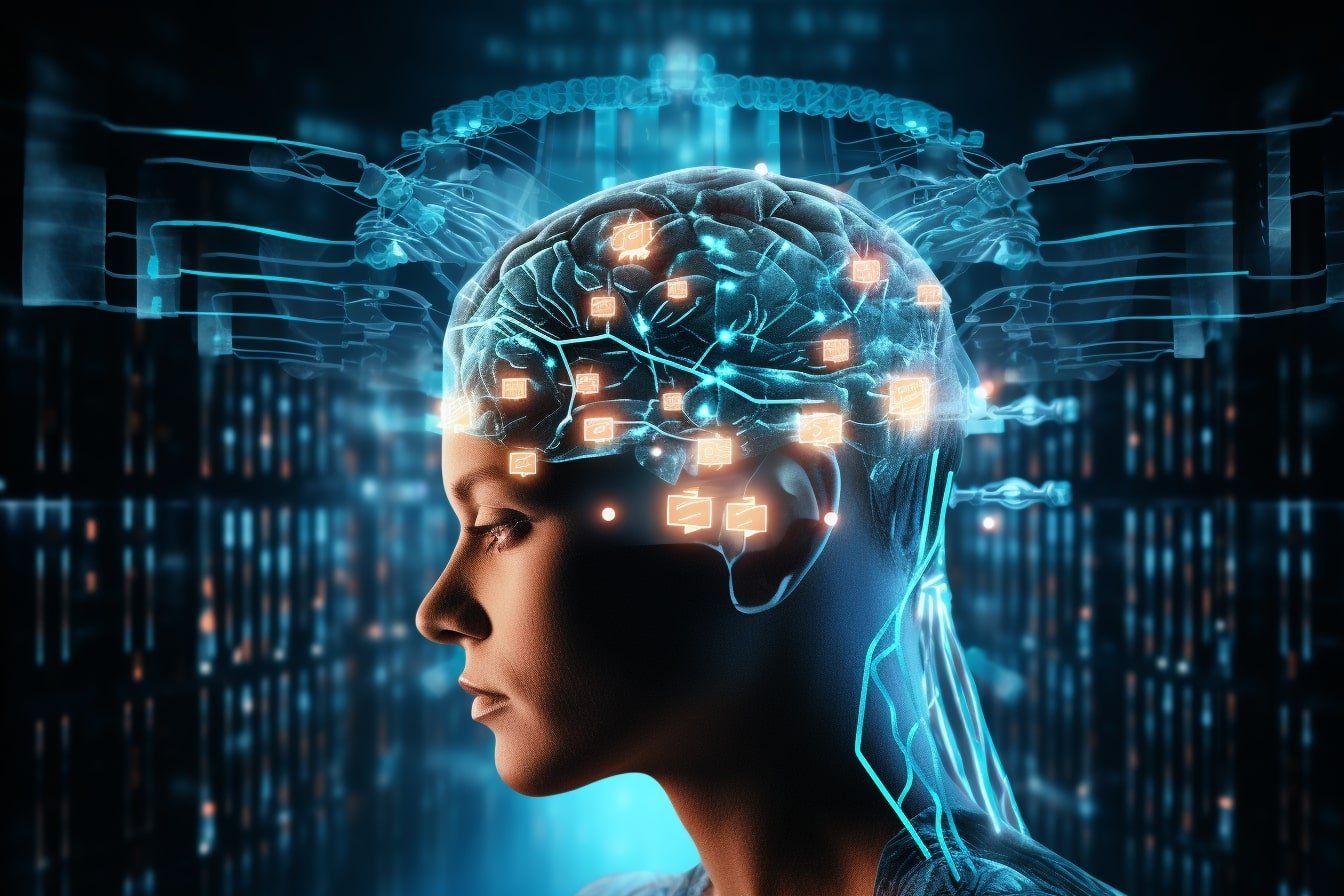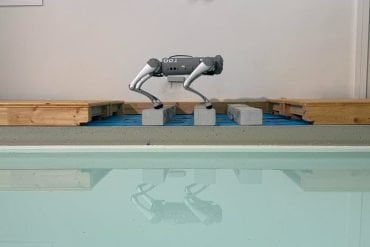Summary: Scientists have created an AI tool, called CHARM, that can swiftly identify a brain tumor’s molecular identity during surgery, a process that typically takes days or weeks.
This advance could help neurosurgeons make critical decisions about the extent of tissue removal and possible on-the-spot treatments. The tool still requires clinical validation and FDA approval, but its development represents a significant leap towards real-time precision oncology.
Beyond the operating room, understanding a tumor’s molecular type can provide important insights into its potential aggressiveness and response to treatment.
Key Facts:
- CHARM is an AI tool capable of decoding a brain tumor’s DNA during surgery, providing real-time molecular diagnosis that can guide surgical decisions.
- Currently, the human eye cannot reliably detect subtle genomic variations in tissue slides; CHARM overcomes this limitation, offering a 93% accuracy rate in identifying specific molecular mutations.
- While developed for glioma, researchers suggest the tool could be retrained to identify other brain cancer subtypes, underscoring its potential versatility in cancer diagnosis.
Source: Harvard
Scientists have designed an AI tool that can rapidly decode a brain tumor’s DNA to determine its molecular identity during surgery — critical information that under the current approach can take a few days and up to a few weeks.
Knowing a tumor’s molecular type enables neurosurgeons to make decisions such as how much brain tissue to remove and whether to place tumor-killing drugs directly into the brain — while the patient is still on the operating table.

A report on the work, led by Harvard Medical School researchers, is published July 7 in the journal Med.
Accurate molecular diagnosis — which details DNA alterations in a cell — during surgery can help a neurosurgeon decide how much brain tissue to remove.
Removing too much when the tumor is less aggressive can affect a patient’s neurologic and cognitive function. Likewise, removing too little when the tumor is highly aggressive may leave behind malignant tissue that can grow and spread quickly.
“Right now, even state-of-the-art clinical practice cannot profile tumors molecularly during surgery. Our tool overcomes this challenge by extracting thus-far untapped biomedical signals from frozen pathology slides,” said study senior author Kun-Hsing Yu, assistant professor of biomedical informatics in the Blavatnik Institute at HMS.
Knowing a tumor’s molecular identity during surgery is also valuable because certain tumors benefit from on-the-spot treatment with drug-coated wafers placed directly into the brain at the time of the operation, Yu said.
“The ability to determine intraoperative molecular diagnosis in real time, during surgery, can propel the development of real-time precision oncology,” Yu added.
The standard intraoperative diagnostic approach used now involves taking brain tissue, freezing it, and examining it under a microscope.
A major drawback is that freezing the tissue tends to alter the appearance of cells under a microscope and can interfere with the accuracy of clinical evaluation.
Furthermore, the human eye, even when using potent microscopes, cannot reliably detect subtle genomic variations on a slide.
The new AI approach overcomes these challenges.
The tool, called CHARM (Cryosection Histopathology Assessment and Review Machine), is freely available to other researchers. It still has to be clinically validated through testing in real-world settings and cleared by the FDA before deployment in hospitals, the research team said.
Cracking cancer’s molecular code
Recent advances in genomics have allowed pathologists to differentiate the molecular signatures — and the behaviors that such signatures portend — across various types of brain cancer as well as within specific types of brain cancer.
For example, glioma — the most aggressive brain tumor and the most common form of brain cancer — has three main subvariants that carry different molecular markers and have different propensities for growth and spread.
The new tool’s ability to expedite molecular diagnosis could be particularly valuable in areas with limited access to technology to perform rapid cancer genetic sequencing.
Beyond the decisions made during surgery, knowledge of a tumor’s molecular type provides clues about its aggressiveness, behavior, and likely response to various treatments. Such knowledge can inform post-operative decisions.
Furthermore, the new tool enables during-surgery diagnoses aligned with the World Health Organization’s recently updated classification system for diagnosing and grading the severity of gliomas, which calls for such diagnoses to be made based on a tumor’s genomic profile.
Training CHARM
CHARM was developed using 2,334 brain tumor samples from 1,524 people with glioma from three different patient populations. When tested on a never-before-seen set of brain samples, the tool distinguished tumors with specific molecular mutations at 93 percent accuracy and successfully classified three major types of gliomas with distinct molecular features that carry different prognoses and respond differently to treatments.
Going a step further, the tool successfully captured visual characteristics of the tissue surrounding the malignant cells. It was capable of spotting telltale areas with greater cellular density and more cell death within samples, both of which signal more aggressive glioma types.
The tool was also able to pinpoint clinically important molecular alterations in a subset of low-grade gliomas, a subtype of glioma that is less aggressive and therefore less likely to invade surrounding tissue. Each of these changes also signals different propensity for growth, spread, and treatment response.
The tool further connected the appearance of the cells — the shape of their nuclei, the presence of edema around the cells — with the molecular profile of the tumor. This means that the algorithm can pinpoint how a cell’s appearance relates to the molecular type of a tumor.
This ability to assess the broader context around the image renders the model more accurate and closer to how a human pathologist would visually assess a tumor sample, Yu said.
The researchers say that while the model was trained and tested on glioma samples, it could be successfully retrained to identify other brain cancer subtypes.
Scientists have already designed AI models to profile other types of cancer — colon, lung, breast — but gliomas have remained particularly challenging due to their molecular complexity and huge variation in tumor cells’ shape and appearance.
The CHARM tool would have to be retrained periodically to reflect new disease classifications as they emerge from new knowledge, Yu said.
“Just like human clinicians who must engage in ongoing education and training, AI tools must keep up with the latest knowledge to remain at peak performance.”
Authorship, funding, disclosures
Coinvestigators included MacLean P. Nasrallah, Junhan Zhao, Cheng Che Tsai, David Meredith, Eliana Marostica, Keith L. Ligon, and Jeffrey A. Golden.
This work was supported in part by the National Institute of General Medical Sciences grant R35GM142879, the Google Research Scholar Award, the Blavatnik Center for Computational Biomedicine Award, the Partners Innovation Discovery Grant, and the Schlager Family Award for Early-Stage Digital Health Innovations.
About this AI and brain cancer research news
Author: Ekaterina Pesheva
Source: Harvard
Contact: Ekaterina Pesheva – Harvard
Image: The image is credited to Neuroscience News
Original Research: Open access.
“Machine Learning for Cryosection Pathology Predicts the 2021 WHO Classification of Glioma” by Kun-Hsing Yu et al. Med
Abstract
Machine Learning for Cryosection Pathology Predicts the 2021 WHO Classification of Glioma
Highlights
- We established the Cryosection Histopathology Assessment and Review Machine (CHARM)
- CHARM predicted IDH mutation and 2021 WHO classification of glioma using cryosections
- CHARM provided quantitative evidence supporting the reclassification of astrocytoma
- CHARM facilitated real-time cryosection diagnoses and can be extended to other cancers
Summary
Background
Timely and accurate intraoperative cryosection evaluations remain the gold standard for guiding surgical treatments for gliomas. However, the tissue-freezing process often generates artifacts that make histologic interpretation difficult. In addition, the 2021 WHO Classification of Tumors of the Central Nervous System incorporates molecular profiles in the diagnostic categories, so standard visual evaluation of cryosections alone cannot completely inform diagnoses based on the new classification system.
Methods
To address these challenges, we develop the context-aware Cryosection Histopathology Assessment and Review Machine (CHARM) using samples from 1,524 glioma patients from three different patient populations to systematically analyze cryosection slides.
Findings
Our CHARM models successfully identified malignant cells (AUROC = 0.98 ± 0.01 in the independent validation cohort), distinguished isocitrate dehydrogenase (IDH)-mutant tumors from wild type (AUROC = 0.79–0.82), classified three major types of molecularly defined gliomas (AUROC = 0.88–0.93), and identified the most prevalent subtypes of IDH-mutant tumors (AUROC = 0.89–0.97). CHARM further predicts clinically important genetic alterations in low-grade glioma, including ATRX, TP53, and CIC mutations, CDKN2A/B homozygous deletion, and 1p/19q codeletion via cryosection images.
Conclusions
Our approaches accommodate the evolving diagnostic criteria informed by molecular studies, provide real-time clinical decision support, and will democratize accurate cryosection diagnoses.
Funding
Supported in part by the National Institute of General Medical Sciences grant R35GM142879, the Google Research Scholar Award, the Blavatnik Center for Computational Biomedicine Award, the Partners’ Innovation Discovery Grant, and the Schlager Family Award for Early Stage Digital Health Innovations.






